Workshop design
One barrier that prevented this work being done before was the different customer segmentation each agency uses. To work around this, I designed the workshop to focus on a deck of customers, their "common" experience and an "extreme" experience. I created a simple pre-workshop activity sheet asking participants to define their customer segmentation, so I could group these customers ahead of time and create activity templates best suited to the agency.
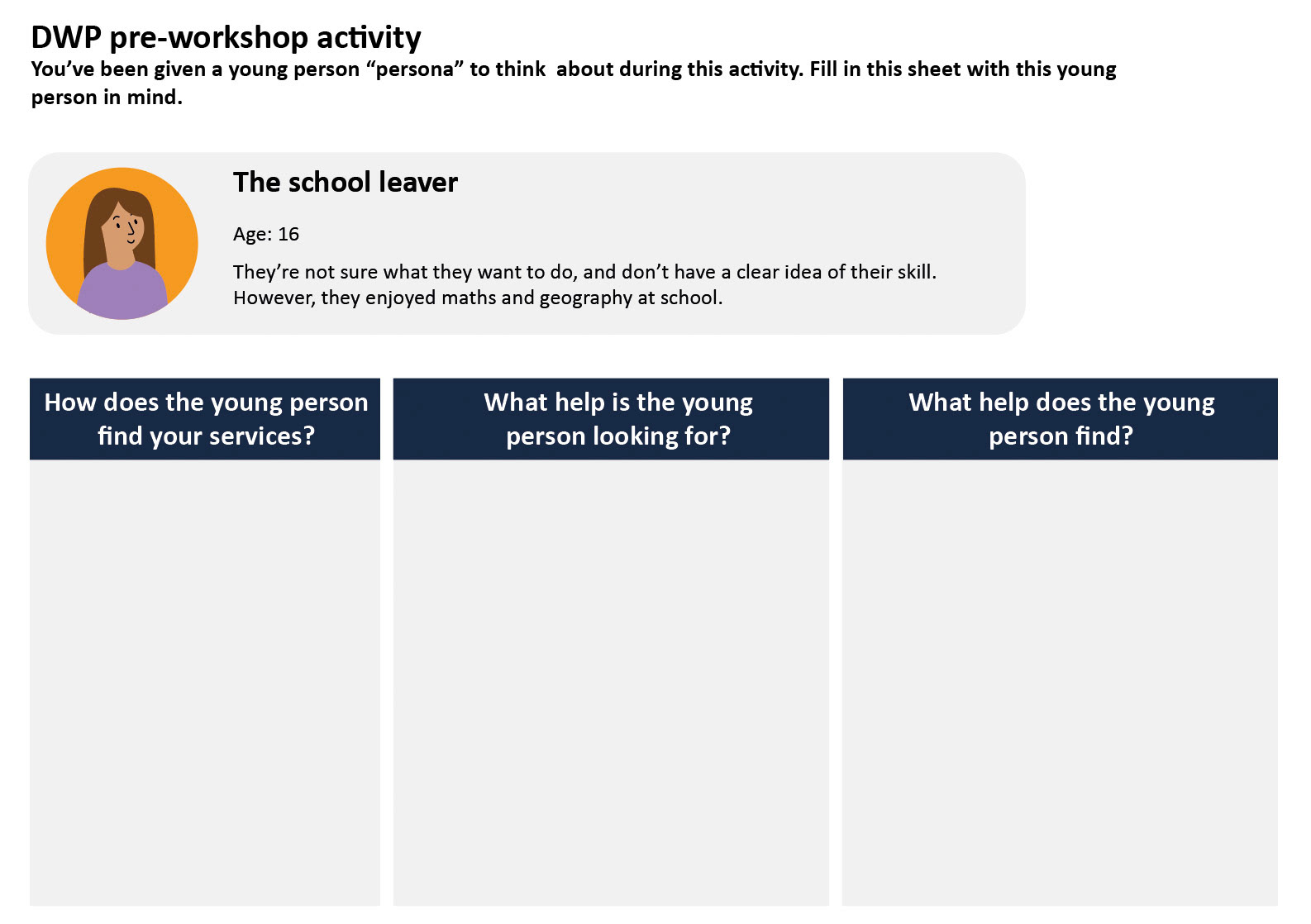
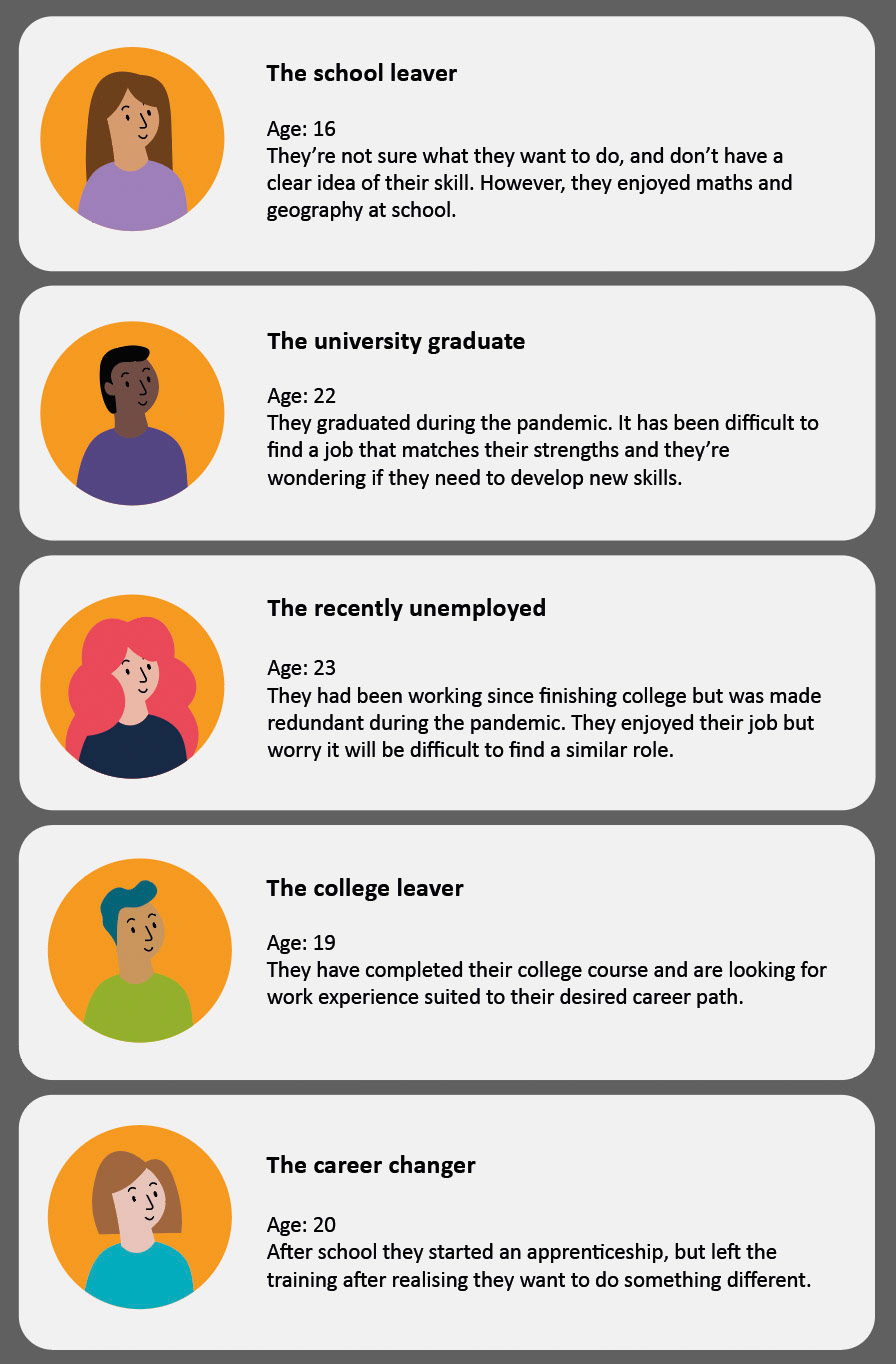

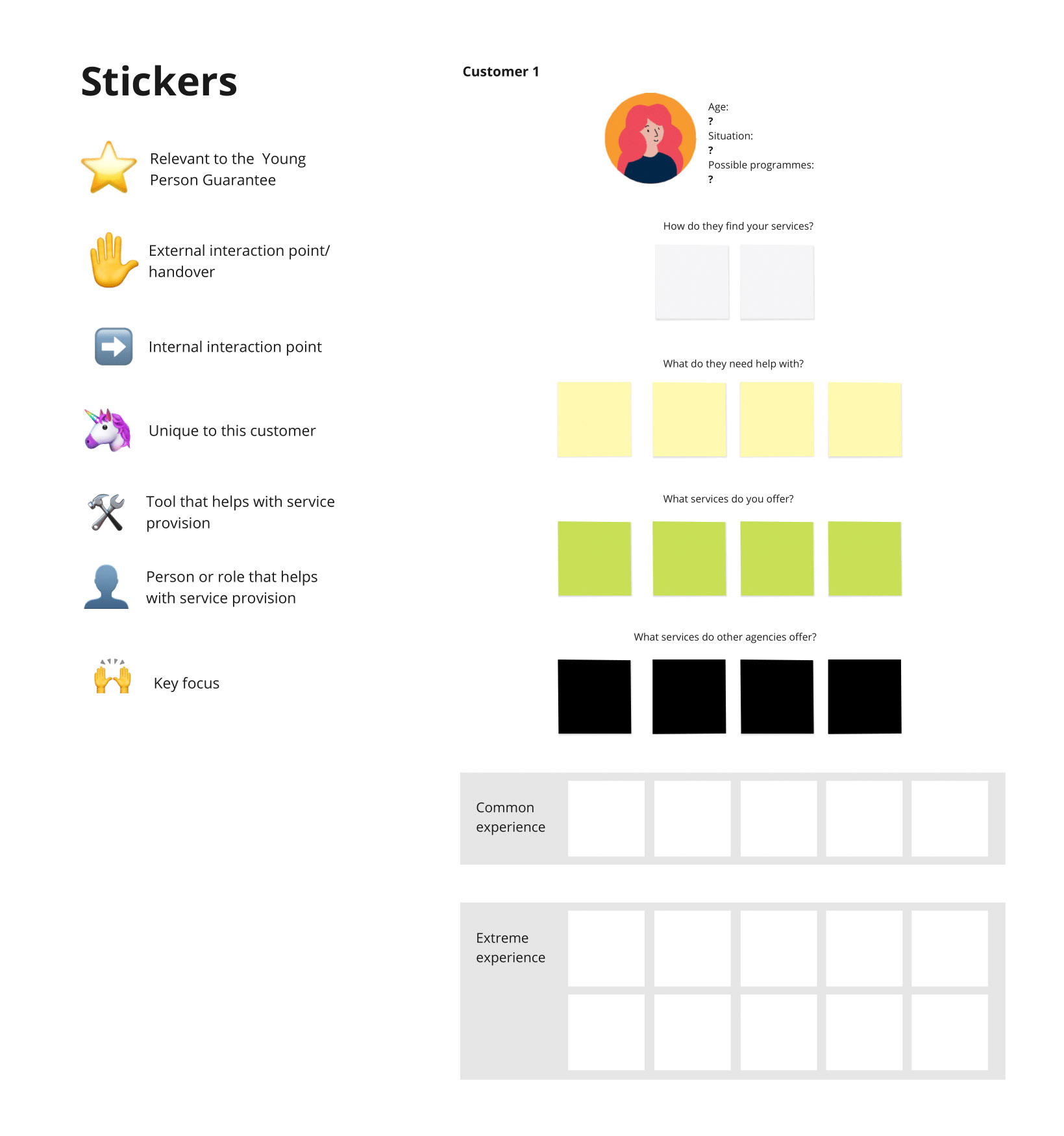
Workshop facilitation
For a lot of the participants of the workshop series, it was their first exposure to a user-centred approach. I made sure to start the sessions coming to an agreement on useful definitions of key words: services, programmes and interactions. For this piece of work, considering a service as "what helps the customer" rather than everything agency staff know goes into service delivery, helped everyone to understand the level of detail needed.
The workshop session focused on engaging the participants from the various agencies, adding more detail to the customer journeys, and synthesising insights on-the-spot for feedback on how I was representing their services. The workshop had to be fairly flexible, so I had a bank of templates and stickers to help illustrate the information being shared.
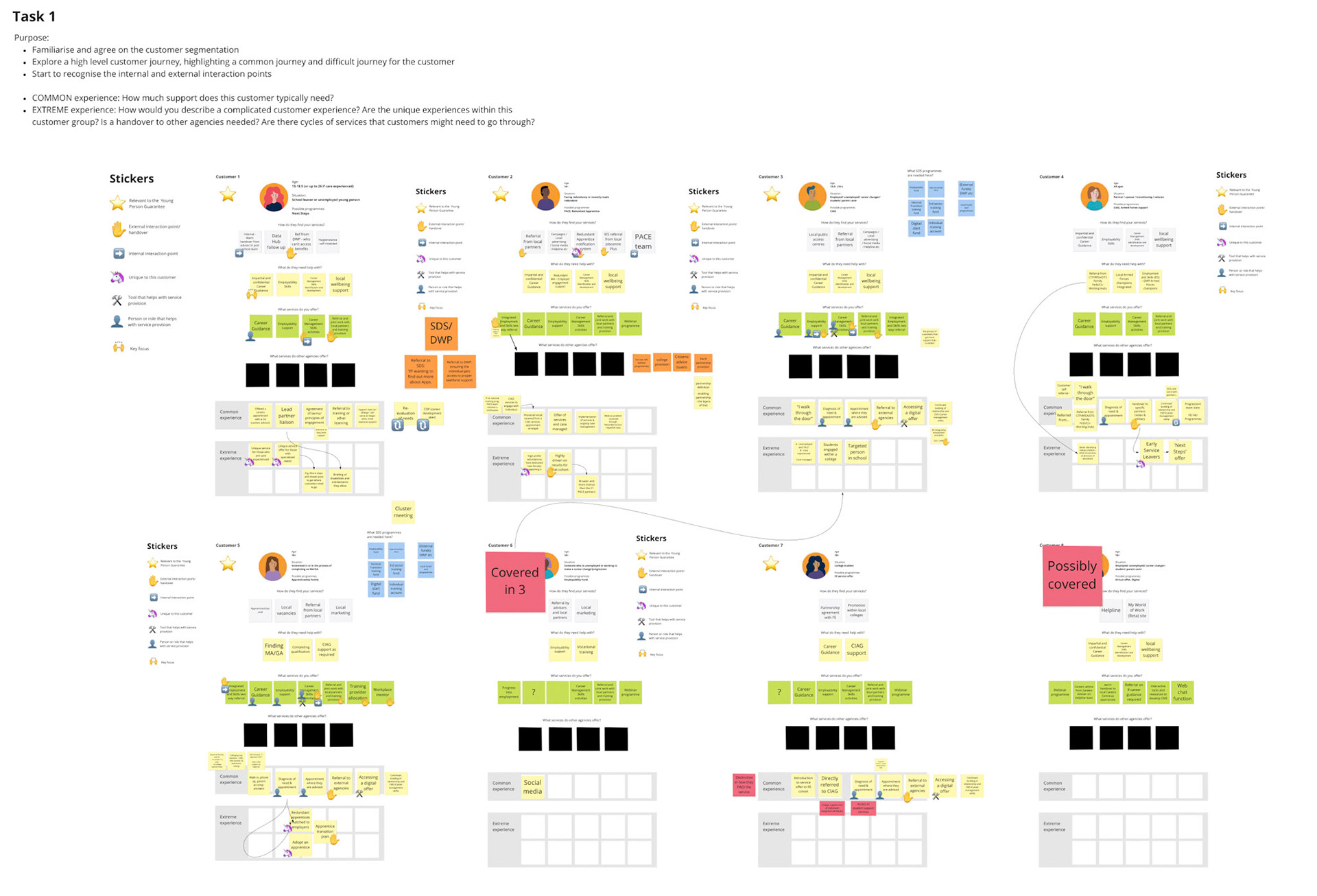


Synthesis
After the first workshop, I had 3 hours worth of insights from two different agencies. It was obvious that the two had different approaches to service provision, measuring success and managing customer journeys.
I was able to create a visual from the workshop insights that helped to show parallels between the two agencies: a tiered visual dividing core services, targeted support/partnerships and external referrals. This allowed me to show both internal and external interactions between services, exceeding expectations for the high-level visual.
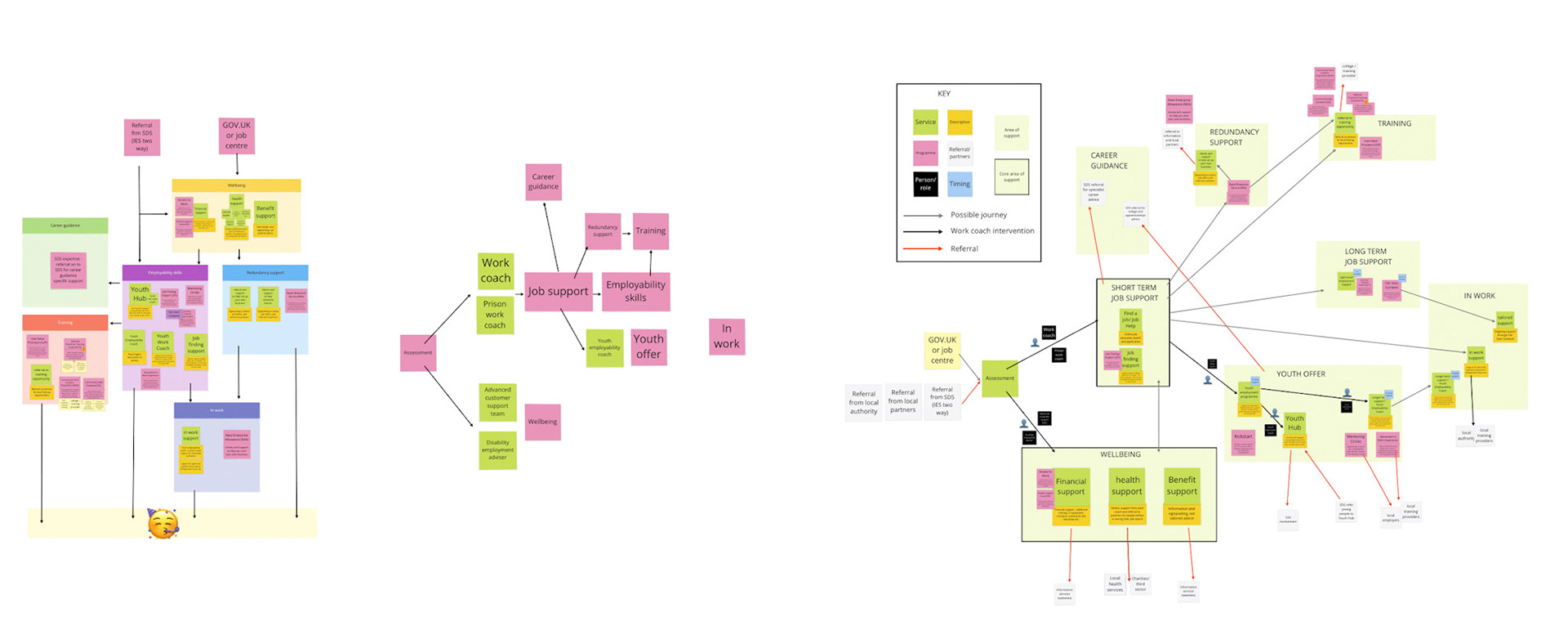

Results
The final map design used a high-level customer journey to align the services from each agency. Services, programmes, roles and referrals were all found to be important parts of service provision, so were each given their own layer.
The map is being used as a tool during user engagement workshops with Young Scot, focusing on the Young Person's Guarantee. It is also helping to guide the mapping of localised services by local authorities. By following a user-centred approach during the design of the map, the final visual is relatable to both young people accessing employability services in Scotland and local authority staff.
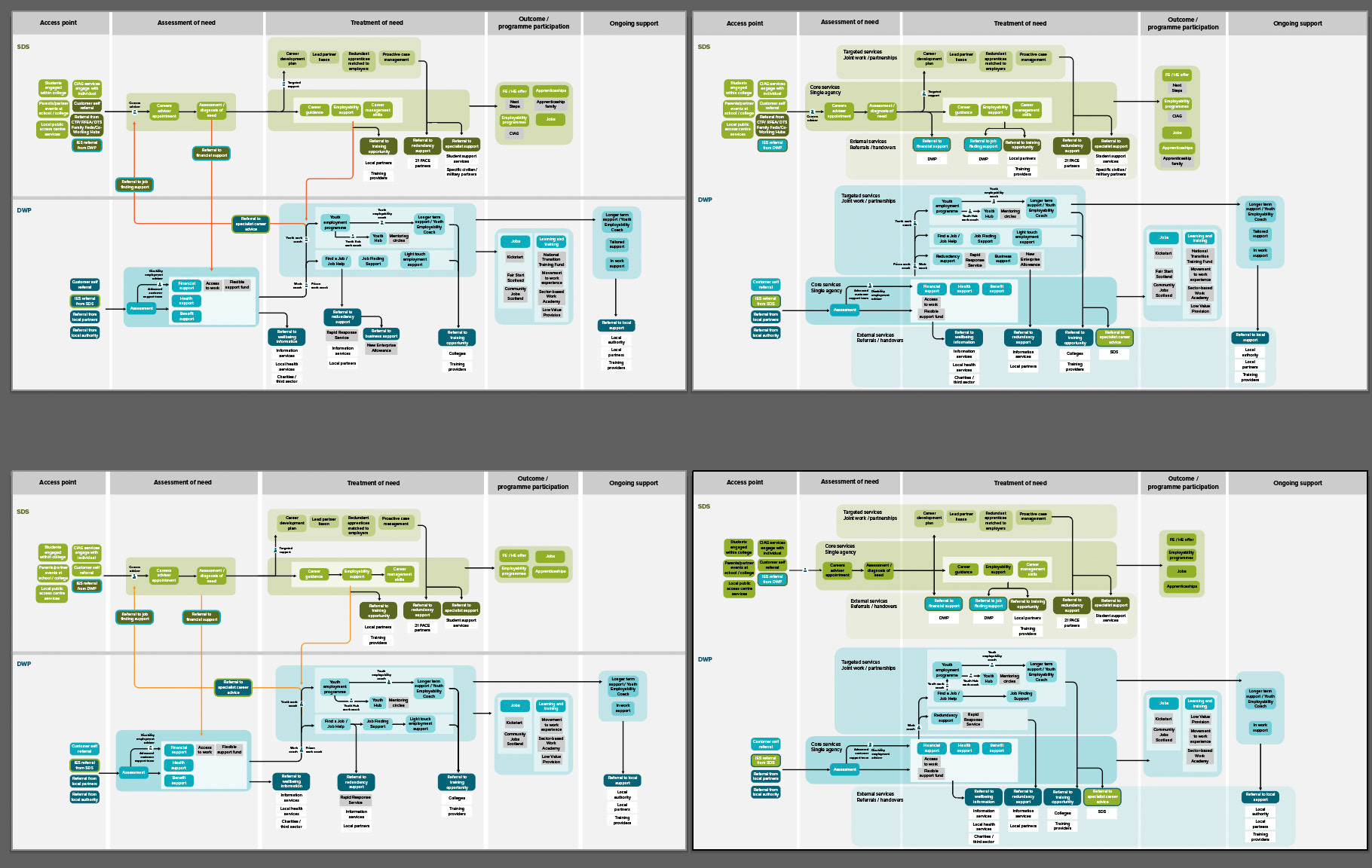

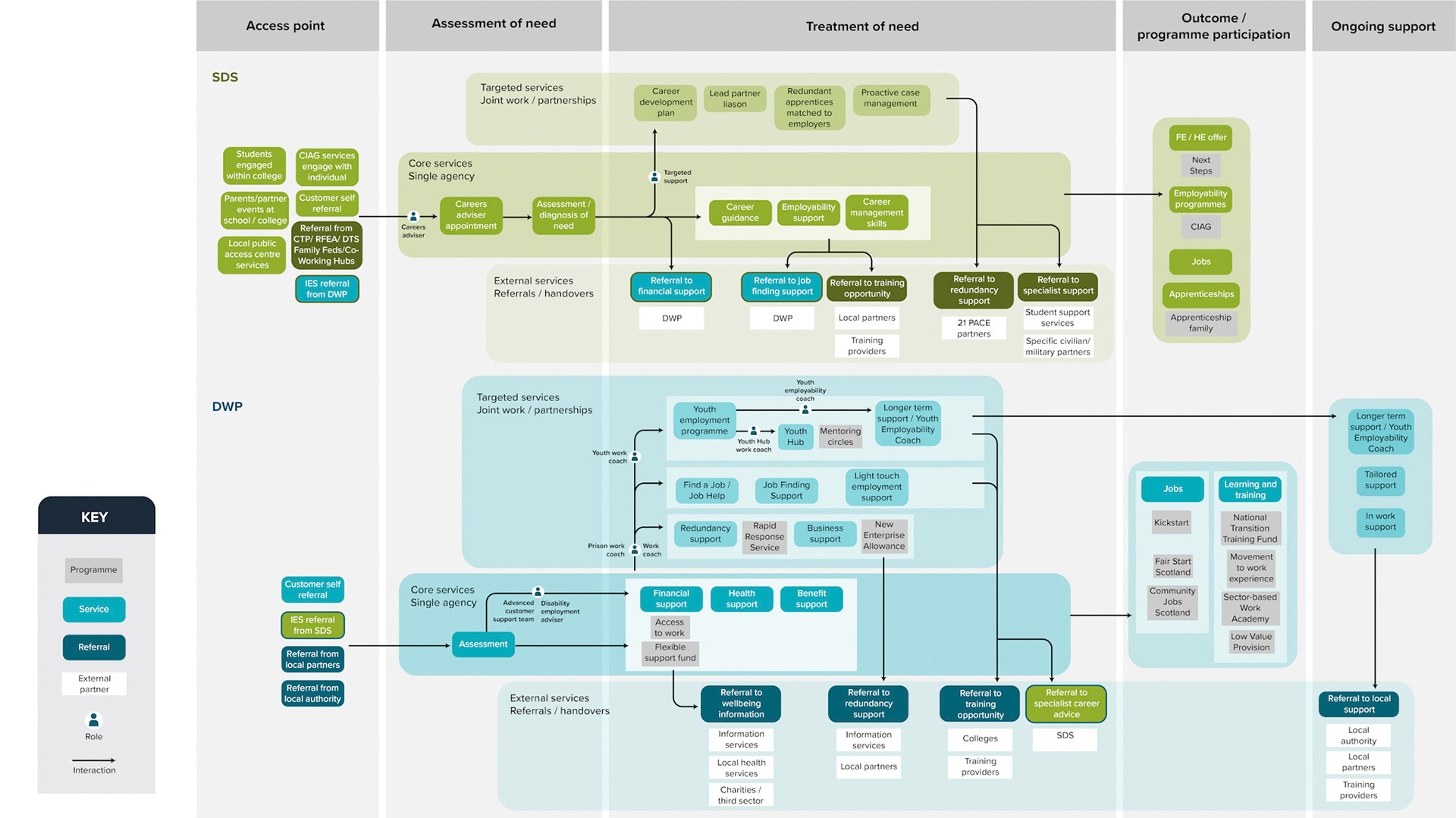
Successes
A flexible approach to the workshops worked well for the exploratory discussions that were so valuable to the project. I had created templates informed by research, and was able to adapt them mid-session to suit the information that was shared.
Quick synthesising during the workshops (made easier by Miro) meant I was able to test out some ways of presenting the insights and get immediate feedback from participants. I felt this helped everyone understand the purpose of the workshop better, and felt energised when their feedback was being valued and acted upon.
Lessons learnt
The first workshop of this series made me realise I had a rigid view of research and synthesis stages, believing that synthesis could only happen when all information has been gathered from a workshop. If I had shared my concerns about how to compare the different service delivery methods during the workshop, I might have had an easier time organising the insights after the session. Doing this in the following workshops helped to streamline the synthesis process, and engaged workshop participants in the next stages of the project.